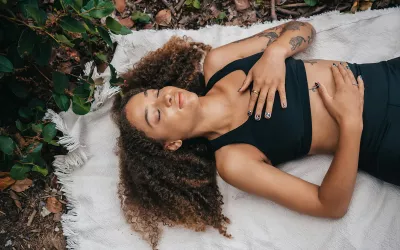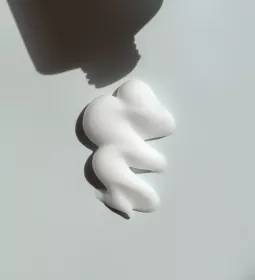Non-sleep deep rest (NSDR) is a relatively new term used to describe a host of practices that shift the body out of the sympathetic (fight, flight, freeze, or fawn) response into the parasympathetic (rest and digest) response. NSDR encompasses mindful practices like yoga nidra, meditation, breathwork, and guided imagery. NSDR fosters sleep-like states in a short period of time. Research demonstrates NSDR encourages a deep state of wakeful relaxation and can often be a precursor to getting the zzz’s you need. Inducing a sleep-like state in the middle or at the end of your day has copious benefits, especially if you don’t feel like you are getting quality sleep or enough sleep.

NSDR has been shown to resolve insomnia (in cases where you can’t fall asleep or can’t go back to sleep if you wake up), restless leg syndrome, or the common complaint of feeling unrested after a full night’s sleep. If used in the afternoon, it can recharge and refresh your brain. In the evening, NSDR can be a tool for letting go of trying “to do” sleep and, instead, allow sleep to come to you.
In times of deep rest, our bodies heal. Research reveals that just 20 minutes of NSDR can “help the brain learn more quickly, increase how long you retain information, and may help you get a better sleep come bedtime.” Additionally, it supports stress and anxiety reduction, diminishes pain, and increases neuroplasticity.1
We invite you to find the rest you need or want with the following body scan. We have also put together a guided NSDR experience for you to use when you need it (scan the QR code). May you find the deep rest you need to heal and feel restored.
NSDR Experience
Check in with your body. Allow your body intelligence to help you choose to experience this in a seated or lying position. Get as comfortable as possible, soften your eyes, and connect with your breath. Breathe past your rib cage and experience your abdomen rising on your in-breath and your belly sinking back on the out-breath.
Now, turn your attention to your feet. Without judgment, notice and feel the soles, arches, and tops of your feet for another three or more generous breaths. This time belly-breathe in through your nose and out through your mouth.
Draw your attention up to your ankles, calves, and shins and notice your muscles, bones, and any clothing you are in contact with. Scan up to your knees, thighs, and hamstrings, breathing in through your nose and out through your mouth.
Allow your breath and awareness to circulate into your hips, waist, and low back. Continue to draw your attention into your rib cage, shoulders, and chest with a few more luxurious breaths in through your nose and out through your mouth.
Extend your awareness into your arms, wrists, hands, and fingers and breathe. Move your attention up into your throat and neck, noticing any sensations or energies that emerge.
Continue to breathe into your face, scalp, and the space between your ears. Breathe deeply and completely—again, in through your nose and out through your mouth.
Scan from head to toes and skin to bone and feel the fullness of your breath. When you feel complete, gently move your fingers or toes, shift your head gently from side to side, and softly open your eyes.
Note
1. Joni Sweet, “What Is Non-Sleep Deep Rest? Learn How This Next-Gen Power Nap Can Give You a Boost,” March 22, 2023, https://sleep.com/sleep-health/non-sleep-deep-rest; Stephen Parker, “Training Attention for Conscious Non-REM Sleep: The Yogic Practice of Yoga-Nidra and Its Implications for Neuroscience Research,” Progress in Brain Research 244 (January 2019): 255–72, http://doi.org/10.1016/bs.pbr.2018.10.016.








